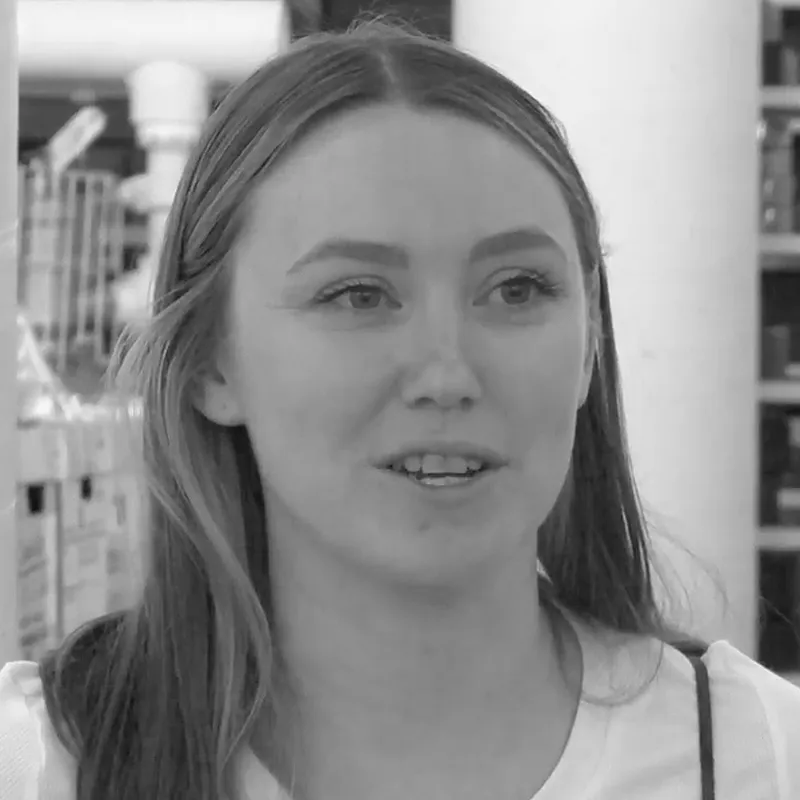
알렉산드라와 저는 아카이브의 수집부터 처리, 접근까지 모든 과정을 관리하고 있습니다. 함께 일하는 것이죠. 저는 도면, 사진, 텍스트 기록, 모형과 같은 아날로그 자료로 더 많이 작업합니다. 그리고 알렉산드라는 아카이브의 본 디지털 자산을 관리합니다. 또한 프로세싱 아키비스트와 디지털 기술자로 구성된 팀도 관리합니다. 현재 4명의 처리 아키비스트가 있습니다. 이들은 특정 아카이브를 연구·보존하고, 접근성을 높이는 작업을 담당하고 있습니다. 일반적으로 한 명의 처리 아키비스트가 하나의 전체 아카이브에 배정됩니다. 그리고 필요한 만큼의 시간을 들여 새로운 상자에 다시 보관하고, 온라인에 게시할 검색 보조 자료를 작성하고, 공공이 접근할 수 있도록 합니다.
그리고 디지털 기술자 또는 디지털 아카이브 기술자는 제가 직접 관리합니다. 그는 디지털 아카이브 관리의 기술적인 측면에서 정말 중추적인 역할을 하고 있어요. 미디어 안정화라고 하는 디스크 이미징 작업을 하고, 자료의 문제를 찾아내어 더욱 기술적인 수준에서 문제를 해결하는 반면에, 저는 관리자의 역할에 더 가깝습니다. 그리고 다른 팀과도 협력하죠.
따라서 아카이브 외에도 CCA의 다른 팀과 협력하여 이러한 기록물을 관리하고 액세스할 수 있도록 합니다. 예를 들어, CCA의 모든 수장고와 외부 수장고를 관리하는 소장품 관리팀과 협력하고 있습니다. 또한 아카이브의 순환을 담당하기도 합니다. 말하자면, 연구실에서 요청이 있으면 요청서를 작성하여 연구실로 가져와 모든 자료가 제자리에 있는지 확인하는 일도 이 팀원들이 담당합니다.
이와 마찬가지로 우리는 참고문헌 사서들과 긴밀하게 협력합니다. 사서들은 실제로 대중과 만나는 사람들이죠. CCA에 와서 아카이브를 보고 싶으면 먼저 사서에게 연락을 해야 합니다. 사서들은 여러분의 연구를 도와줄 수 있습니다. 관리 가능한 범위의 자료로 요청 범위를 좁히는 데 도움을 줄 수 있습니다. 이는 항상 문제가 되는 부분입니다. 보시다시피 아카이브는 상당히 방대한 양입니다. 그래서 저희는 연구자가 원하는 자료를 찾고 접근할 수 있도록 긴밀히 협력하고 있습니다.
건축 아카이브의 독특한 점은 무엇일까요? 예를 들어 정부 기록물을 생각해 보면, 법적인 이유로 보관되는 텍스트 기록이 많을 것입니다. 반면에 건축 아카이브에는 정말 다양한 형식의 기록이 있습니다. 도면, 사진, 영상 자료, 텍스트 기록인 CAD 파일도 있습니다. 그런 면이 정말 독특하죠. 이러한 자료는 그 자체로 하나의 예술 작품이 되지만, 그 작품이 만들어진 배경에 대한 매우 완벽한 이야기를 담고 있습니다.
아이디어 아카이브라는 점이 특이하다고 생각합니다. 물론 건축물에 대한 기록도 있지만, 주로 건축의 과정과 이면에 있는 아이디어를 기록하고 있기 때문입니다.
Alexandra and I oversee every stage of the archives—from acquisition and processing to access. We work together as a team. I work primarily with analog materials such as drawings, photographs, textual records, and models, while Alexandra manages the core digital assets of the archives. She also supervises a team composed of processing archivists and a digital technician. At present, there are four processing archivists. They are responsible for researching and preserving specific archives and for enhancing their accessibility. Typically, one processing archivist is assigned to an entire archive.
They take as much time as necessary to rehouse materials in new boxes, prepare finding aids to be posted online, and ensure that the public can access the materials. The digital technician—or digital archives technician—reports directly to me. He plays a crucial role in the technical aspects of digital archive management. His responsibilities include disk imaging for media stabilization, identifying issues with the materials, and resolving problems on a highly technical level, whereas my role is more managerial. I also collaborate with other teams.
Beyond the archives team, we work closely with other groups at the CCA to ensure the records are properly managed and accessible. For example, we collaborate with the collections management team, which oversees all CCA storage facilities as well as external repositories. We are also involved in the circulation of archival materials—meaning that when a request comes in from the study room, our team handles the paperwork, retrieves the requested materials, and ensures everything is returned to its place.
Similarly, we work closely with the reference librarians, who are the primary point of contact for the public. Anyone wishing to consult the archives at the CCA must first contact a librarian, who can assist with their research and help narrow down requests to a manageable scope. This is always a challenge, as the archives are vast. By working closely together, we ensure that researchers can locate and access the materials they need.
What makes architectural archives unique? For example, if you think about government records, many of them are textual documents preserved for legal reasons. By contrast, architectural archives contain an extraordinary variety of formats—drawings, photographs, video materials, and textual records such as CAD files. This diversity is truly distinctive. These materials can be works of art in their own right, yet they also hold remarkably complete stories about the contexts in which those works were created.
I believe their nature as archives of ideas is particularly special. While they certainly include records of built architecture, they primarily document the processes and underlying ideas behind architecture.